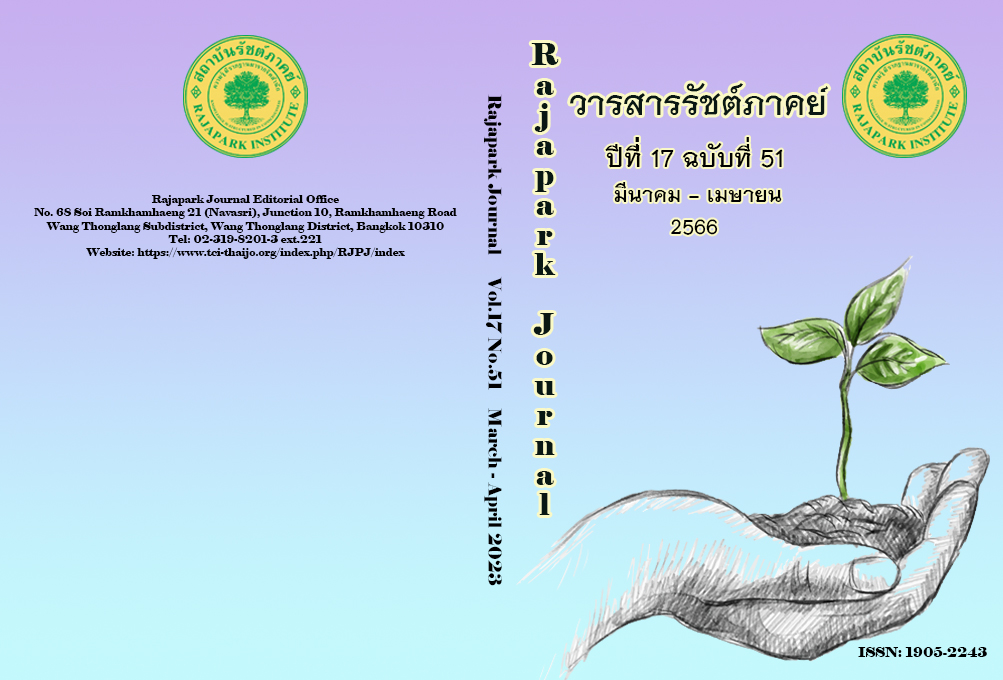Assessment Guidelines for Promoting Moral Intelligence for Lower Secondary Students
Main Article Content
Abstract
The purposes of this research were: 1) to determine criteria for moral intelligence assessment and guidelines for presenting the results of the moral intelligence assessment to lower secondary school students; and 2) to search for guidelines to promote moral intelligence for lower secondary school students. The sample was 14 educational and academic experts and 2,000 lower secondary students from 25 schools across the country, selected by purposive sampling. The tools used for collecting data are focus group conversation note forms and assessing moral intelligence. The data were analyzed using frequency, mean, standard deviation, and content analysis. The research results were found as follows: 1) For moral intelligence, there are three important issues: (1) defining moral intelligence assessment criteria; (2) recording and reporting results; and (3) reviewing the quality of measurement manuals. 2) In searching for guidelines to promote them, it was found that there should be a clear, easy-to-understand report on results that was easy to use for all groups. A T-score assessment should be developed by the program. Organizations should play a common role in integrating policy into action, propelling, supporting, and managing learning through a variety of techniques while taking into account the suitability of the age range.
Article Details

This work is licensed under a Creative Commons Attribution-NonCommercial-NoDerivatives 4.0 International License.
Views and opinions appearing in the Journal it is the responsibility of the author of the article, and does not constitute the view and responsibility of the editorial team.
References
Abdellatif, M. S. (2022). Moral intelligence and its relationship to academic entitlement and academic performance of secondary school students. European Journal of Educational Research, 11(4), 2291-2301. https://doi.org/10.12973/eu-jer.11.4. 2291.
Apple, M. W. (1989). Cultural Politics and Education. Teachers College Press.
Beheshtifar, M., Esmaeli, Z., & Nekoie. Moghadam, M. (2011). Effect of Moral Intelligence on Leadership. European Journal of Economics Finance and Administrative Sciences, 43, 6-11.
Borba, M. (2001). Building Moral Intelligence: The Seven Essential Virtues that Teach Kids to Do the Right Thing. John Wiley & Sons.
Chantavanich, S., Laodumrongchai, S., & Stringer, C. (2016). Under the Shadow: Forced Labour Among Sea Fishers in Thailand. Marine Policy, 68, 1-7.
Cureton, E.E. (1951). Validity. In E.F. Lindquist (ed.), Educational Measurement (pp.621-694). American Council on Education.
Dewey, J. (1934). A Common Faith (4th ed.). Yale University Press.
Faramarzi, M. et al. (2014). The Role of Moral Intelligence and Identity Styles in Prediction of Mental Health Problems in Healthcare Students. Health, 6(8), 664-672. http://dx.doi.org/10.4236/health.2014.68086
Gardner, H. (1983). Frames of Mind. Basic Books.
Gibbs, J.C., Potter, G.B., & Goldstein, A.P. (1995). The EQUIP Program. Teaching youth to think and act responsibly through a peer-helping approach. Research Press.
Herrick, J. (2003). Humanism: An Introduction. Rationalist Press Association.
Jaikla, P., Worakham, P., & Ingard, S. (2012). The Relationship Model of Factors Influencing Moral Quotients of Junior High School Students in Maha Sarakham Province. RMU. J (Humanities and Social Sciences), 6(2), 109-117.
Killen, M., & Smetana, J.G. (2015). Origins and Development of Morality. In M. E. Lamb & R. M. Lerner (Eds.), Handbook of Child Psychology and Developmental Science: Socioemotional Processes (pp. 701–749). John Wiley & Sons. https://doi.org/10.1002/9781118963418.childpsy317
Kohlberg, L., & Ryncarz, R. (1990). Beyond Justice Reasoning: Moral Development and Consideration of a Seventh Stage. In C. Alexander & A. Langer (Eds.), Higher Stages of Human Development. Oxford University Press.
Koosirivichian, P. (2007). Intelligence in various fields that everyone should have. Academic Journal of Education, 8(1), 87-98.
Lennick, D., & Kiel, F. (2005). Moral Intelligence: Enhancing Business Performance & Leadership Success. Wharton School Publishing.
Lennick, D., & Kiel, F. (2011) Moral Intelligence 2.0: Enhancing Business Performance and Leadership Success in Turbulent Times. Pearson Prentice Hall.
Lickona, T. (1991). Educating for Character: How our Schools Can Teach Respect and Responsibility. Bantam Books.
Lincharearn, A. (2018). Qualitative Data Analysis Techniques. Journal of Educational Measurement Mahasarakham University: JEM-MSU, 17(1), 17-29. https://so02.tci-thaijo.org/index.php/jemmsu/article/view/149164/109532
Peters, R.S. (1966). Ethics and Education. Allen & Unwin.
Rodney, H.C. (2010). Considering Moral Intelligence as Part of a Holistic Education. In Paper Presented at the Annual Meeting of the American Educational Research Association, Denver, CO, April, 30 – May, 4. (pp. 1-9). https://files.eric.ed.gov/fulltext/ED509643.pdf


